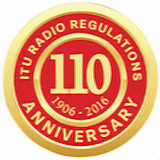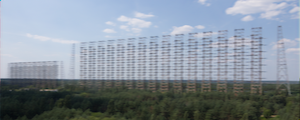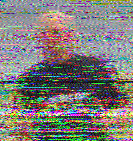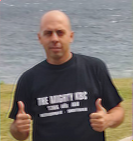Hello and welcome to DigiDX 36 a weekly review of the latest shortwave radio
and DX news.
This episode contains digital mode broadcast schedules, radio
related news and some thoughts on DRM radios.
DigiDX weekly schedule:
Sunday 0630-0700 on 6070 kHz via Channel 292 (10 kW, Rohrbach Wall, DE)
Sunday 2130-2200 on 15770 kHz via WRMI (100 kW, Okeechobee, FL, USA)
Sunday 2330-0000 on 11580 kHz via WRMI (100 kW, Okeechobee, FL, USA)
Monday 2000-2030 on 6070 kHz via Channel 292 (10 kW, Rohrbach Wall, DE) (irr.
at the moment)
Any other extra broadcasts will be listed on
http://www.digidx.uk
If you enjoy DigiDX and find the service useful please consider donating via
Paypal to
reports@digidx.uk. Any money donated will go towards paying for airtime to
keep DigiDX on the air to Europe and North America.
--- DIGITAL MODE BROADCASTS ---
All days and times in UTC
VOA RADIOGRAM
Sat 0930-1000 5865 kHz (new frequency)
Sat 1600-1630 17580 kHz
Sun 0230-0300 5745 kHz
Sun 1930-2000 15670 kHz
All via the Edward R. Murrow transmitting station in North Carolina.
http://voaradiogram.net/
IBC DIGITAL
WED 2030-2100 UTC 3975 kHz in MFSK32 and OLIVIA 16-500 (Italy, 1 kW)
FRI 0225-0230 UTC on 9955 kHz in MFSK32 (Okeechobee, FL, 100 kW)
SAT 2125-2130 on 1584 kHz in MFSK32 (Momigno, Italy, 1 kW AM Stereo)
SUN 0055-0100 UTC on 7730 kHz in MFSK32 (Okeechobee, FL, 100 kW) (new
frequency)
SUN 1130-1200 UTC on 6070 kHz in MFSK32 and OLIVIA 16-500 via Radio BCLNEWS (Rohrbach,
Germany, 10 kW)
For schedule updates, visit IBC at
http://ibcradio.webs.com/ or
https://www.facebook.com/ITALIANBROADCASTINGCORPORATION/
RADIO PUSHKA
On October 23rd a new music show named "Radio Pushka" ("Радио Пушка" in
Russian) was broadcast via the Channel 292 transmitter in Rohrbach, Germany.
Apart from music, it included text in MFSK32 and an SSTV image in Scottie 1
mode.
The following text is from their first broadcast:
"We are a radio station recording our emissions in Sintra,
Portugal. Our goal is to show to the world the best Russian
Alternative Music being produced nowadays.
Radio Pushka is an independent project. Your support is very
important for us.
For now our emission will take place once a month, and we
will try to do it always on a Sunday night. Depending on the
feedback we get from you, we may think about something more
frequent.
We love music but we also love DX communications, specially
digital modes so, during our emissions, we will be sending
text and images, exploring and testing different modes.
Please send your RX reports to our email:
radiopushka at gmail dot com"
Next broadcast is on the 20th of November at 2000 UTC, on 6070 kHz via Channel
292.
http://radiopushka.blogspot.pt/
https://www.facebook.com/radiopushka/
�
�
Sending Pic:280x78;

�
--- LATEST NEWS ---
- 110TH ANNIVERSARY OF THE ITU RADIO REGULATIONS (1906-2016) *
- NEW RUSSIAN ARCTIC OVER-THE-HORIZON RADARS SET FOR 2017 STARTUP *
- RTL-SDR RECEIVER THUMBNET N3 IS NOW SHIPPING *
- SUMMARY OF RESULTS FROM HFCC QUESTIONNAIRE ON PRESENT AND/OR FUTURE DRM
USAGE
* with image
110TH ANNIVERSARY OF THE ITU RADIO REGULATIONS (1906-2016)
International Telecommunication Union (ITU) is the United Nations specialized
agency for information and communication technologies – ICTs.
ITU manages the radio spectrum and satellite orbits resources, develop the
technical standards that ensure networks
and technologies seamlessly
interconnect, and strive to improve access to ICTs to underserved communities
worldwide.
The growing complexity of our information society, where ubiquitous wireless
systems make our life easier and more
sophisticated is reliant on the process
to update the Radio Regulations, which is based on consensus building within
our membership.
The ITU is celebrating this year the 110th anniversary of the Radio
Regulations, a success story of international cooperation
among Members States
with the inestimable support of telecommunication industry partners.
ITU's history is closely linked to the development of radiocommunications. The
crucial role wireless systems are playing in the
efficient and timely
deployment of communications infrastructure is key in the efforts being
undertaken by the global community to bridge
the digital divide and in helping the world communicate.
In 1906 the first International Radiotelegraph Conference gathered 29 states
in Berlin to sign the ´International Radiotelegraph Convention´
establishing
the principle of compulsory intercommunication between vessels at sea and the
land.
The annex to this Convention contained the first regulations governing
wireless telegraphy. These regulations, which have since been expanded
and
revised by numerous radio conferences, are now known as the Radio Regulations.
(source:
http://www.itu.int)
The documents of the 1906 Convention, including the Regulations annex, are
available in French at:
http://www.itu.int/dms_pub/itu-s/oth/02/01/S02010000104003PDFF.pdf
�
�
Sending Pic:160x160C;

�
NEW RUSSIAN ARCTIC OVER-THE-HORIZON RADARS SET FOR 2017 STARTUP
According to media accounts, more long-range, new over-the-horizon (OTH)
radars that can identify aerial and
sea targets hundreds of miles away
are
scheduled to begin operation next year in the Russian Arctic.
It’s doubtful,
however, that the news heralds the return
of interference on the level of that generated by
the so-called “Russian
Woodpecker” OTH radar, which plagued Amateur Radio HF bands in the 1970s and
1980s.
Over the past couple of years, OTH radars, sans woodpecker, have become
increasingly commonplace intruders
on Amateur Radio bands, according to the
International Amateur Radio Union Region 1 (IARU R1) Monitoring
System (IARUMS),
which has noted OTH radars in Russia,
China, Cyprus, Iran, and Turkey. The frequency-hopping
nature of the
technology accounts for the annoying interference that covers wide swaths of
spectrum.
The Russian systems-intelligence “Konteyner RLS” OTH radar,
transmitting from in the Nizhny Novgorod region, is
frequently spotted
on 20 meters. While no woodpecker, it transmits a broad,
frequency-modulated CW signal at 50 sweeps per second
with a bandwidth of 80
kHz or greater, accompanied by signal splatter, IARUMS Coordinator Wolfgang
Hadel, DK2OM, reported recently.
Sputnik, a Russian government-controlled radio service, cited a Rossiiskaya
Gazeta newspaper report that six OTH radar installations
will operate in the
region. Deputy Defense Minister Dmitry Buklgakov, who visited the construction
site, said a runway capable of
handling all types of combat aircraft was simultaneously being reconstructed
nearby, the report continued. Other reports have
indicated that similar
systems will be deployed in the Far East in 2018. Russia has sold its OTH
radar technology to China.
OTH radars employ widely separated (250 kilometers) transmitting and receiving
sites and can “see” beyond the horizon,
the typical limit for ordinary radar.
The transmitting array is 440 meters wide, and it incorporates 36 elements of
varying
configuration. The
three-section receiving array is 1300 meters wide and 35 meters tall. — Thanks
for news tip to Frank Smith, WS1MH
(source:
http://www.arrl.org)
A 2014 photo of Duga, the Soviet era OTH near Chernobyl in Ukraine which was
nicknamed by shortwave listeners the Russian Woodpecker (source: Wikipedia)...
�
�
Sending Pic:300x120C;

�
�
RTL-SDR RECEIVER THUMBNET N3 IS NOW SHIPPING
The latest RTL-SDR receiver, the Thumbnet N3 is now shipping out. The
following information on the new receiver is available on Thumbnet's website.
Introducing the ThumbNet N3 SDR Receiver.
The next Generation, ThumbNet N3 is designed from the ground up to be as
simple to use as older generation dongles,
but with powerful hardware features
for advanced hobbyists and experimenters.
We removed all of the excess components that were sources of noise or
interference in other dongles, and optimized
the circuit for simplicity,
sensitivity and selectability. Then we added a port to use a cable with the
extremely
common mini-USB connection so that the
N3 is less prone to noise from the host computer than a traditional dongle.
Finally, the use of standard Surface Mount 0603 or larger components makes it
simple for testing or modification.
We built them for our own use, then decided to offer them to everyone.
A quick list of the features of the N3:
- Full backward compatibility with existing RTL-SDR dongles and software
- High stability TCXO (+/-0.5ppm) (ensuring rock-solid stability from start-up
and over a wide range of temperatures)
- Standard R820T2 + RTL2832U (plus 24C02 EEPROM) chipset
- Improved/enhanced decoupling. (Common-mode choke on USB port)
- Low-noise, linear only power regulation (separate 1.2v and 3.3v regulators)
- External DC (+5v, 450mA) supply connector
- Mini-USB connection (allows easy separation of the RF unit from the noisy
PC)
- F type RF connector (very common and compatible with existing ThumbNet
tracking stations)
- Large (6x4cm) contiguous ground-plane (for better thermal dissipation)
- Static drain-away resistor on the RF input (1K to ground)
- All unnecessary parts (IR receiver, high-current LED etc.) eliminated to
reduce parts count and noise
- Circuit board can be mounted into a common 1455 case
Ideal for experimentation:
- Can be connected to an external power supply for very clean power
- All of the important tracks are visible on the top side of the board for
easy access
- All of the RF parts are on the top of the board (only regulators and
decouplers on the back)
- Logical, simple layout using 0603 (or larger) SMT parts
- IF port break in connector (between front end and IF/USB chip) provided
Utilizing Clean Power
While not required for operation, the N3 receiver is designed to be able to
utilize a clean source of power from an external 5v power supply, instead of
using the noisy power line coming from the computer's USB port. This gives a
tremendous advantage to the purist or
experimenter who wants to utilize power from the N3 to power any external
experiments. (When the external power supply is active, no power is drawn from
the USB port to power the N3.)
Supporting a Great Cause
100% of the profits from the sale of the N3 are used to support ThumbNet, the
non-profit organization that is helping students around the world learn about
Science, Technology, Engineering and Math (STEM) as well as Space, Radio and
Meteorology. All at the same time!
About Thumbnet
ThumbNet was born to encourage students around the world to look up at the
stars and to give them a chance to feel that they are part of something
larger. The hardware to track and monitor radio signals from satellites in
orbit is donated to the schools by ThumbNet,
and with over 200 volunteer groups in more than 72 countries, we're having an
immediate and positive effect on the lives of hundreds of students around the
globe! ThumbNet averages three new volunteer groups a week, so when you buy an
N3 receiver for your workshop,
you'll know that you're making a difference by supporting a global effort to
educate and inspire students.
We've designed the N3 receiver to be the right tool for the job for our
ThumbNet volunteers, and at only $25.75 each, we think you'll agree that it's
the right tool for you too!
(source
http://www.thumbsat.com/thumbnet-radios)
Reviews of Thumbnet N3 prototypes, with quite positive results, have been
published at the following blogs:
http://www.rtl-sdr.com/rtl-sdr-com-quick-review-of-the-thumbnet-n3-prototype/
http://rtlsdr4everyone.blogspot.com/p/thumbnet-n3.html
Image of Thumbnet N3...
�
�
Sending Pic:200x107C;

SUMMARY OF RESULTS FROM HFCC QUESTIONNAIRE ON PRESENT AND/OR FUTURE DRM USAGE
- 21 organisations sent back questionnaires to the Secretariat;
- The 21 organisations described themselves as:
Commercial broadcaster 2
Private Broadcaster 3
Public Service broadcaster 7
Service provider 7
Other 3
(One organisation selected two descriptions)
- 10 out of 20 organisations operate DRM capable facilities;
- 5 out of 21 organisations have daily DRM broadcasts in the HF bands for a
total of 55 hours 15 minutes;
- International 5 organisations for 26 h 15 min per day,
of which: 4 h 30 min to Africa,
8 h 45 min to Europe,
12 h to Asia and
1 h to Oceania.
National 3 organisations for 5 h per day;
Local (e.g. 26 MHz) 1 organisation for 24 h per day.
- The availability of receivers at retailers would make 5 organisations, out
of the 16 who don’t have regular DRM broadcasts start DRM broadcasts.
Where
these broadcasts would be targeted and the number of hours per day was not
specified. However, 4 organisations
would not start DRM broadcasts and 8 organisations don’t know if they would
start DRM broadcasts if more receivers were available at retailers.
None of the 16 organisations were going to start any DRM broadcasts without
the availability of receivers at the retailers.
- The availability of mass produced receivers would make 14 organisations out
of 21 reconsider their DRM strategy.
- The recommended price for receivers depends on the target area for the DRM
broadcasts:
Africa, Asia and Oceania, less than $ 25;
America and Europe, $ 25 - $ 40;
It was thought that Europe could afford prices higher than $40
(source
http://www.hfcc.org/)
While the results of the HFCC questionnaire do not look too promising for the
future of DRM, two new receivers have been announced recently:
the PantronX
Titus2, at the HFCC B16 Conference in Miami, and the Gospell GR-216, at IBC
2016 in Amsterdam. Both are expected
to hit the market in Q1 2017.
The performance on shortwave of almost all previously produced DRM radios
ranged from poor to moderate at best and they also had a high price tag.
The
currently available made-in-India Avion AV-DR-1410 is not an exception to the
rule.
In order to receive DRM broadcasts with a conventional shortwave radio, a
downmixer unit from 455 kHz or 10.7 MHz (typical intermediate frequencies)
to
12 kHz (input of a PC-soundcard) is needed. Then, the signal received by the
soundcard can be decoded with the
excellent free software Dream
which runs on Windows, Linux or Mac.
More than 10 years ago, the Chinese company Kchibo came out with a good idea
but with a bad product. The low-budget Kchibo KK-DRM 01 was designed
with a 12
kHz IF output, but a pre-production prototype had problems with DRM reception
above 9 MHz. As a result, it
never reached the production line.
It will be very interesting to see Tecsun implementing this idea into one of
their excellent portable radios of the 600 or 800 series. The increase of the
cost of the final product would be probably less than $5.
In any case, from a DXer's point of view, listening to DRM is not the same as
trying to pull out of the noise that distant low-powered station!
Thank you for listening, please send reports, comments and shortwave related
news or articles to
reports@digidx.uk.
This is DigiDX Signing off...
�













